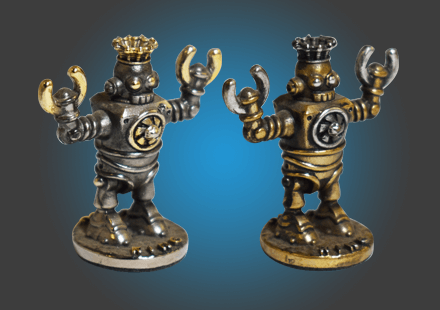From Cufflink to Checkmate: Crafting a Unique Robot Chess Set
Once we imagined transforming a cufflink robot design into an intricate and captivating chess set. The question was could we do it? This creative journey not only challenged our design skills but also resulted in a limited-run collector’s piece. Curious about how we started? Let’s make the first move!
1: Conceptualizing the Chess Set
From cufflink part to Pawn
In the past, we had manufactured a retro robot cufflink. At the time, our resident silversmith designed it, and hand-crafted a classic. It was informed by the style of tin 1950’s retro robots. The simple but cute design used brass material in an antique finish.
It occurred that this original robot could become a pawn for a chess set design. We decided to maintain the scale of the existing robot cufflink and base all the other chess pieces and the chess board on these measurements with an 18mm round base.
We started by redrawing the robot pawn to be able to cast it in one piece, and we began modelling the design in 3D CAD software. Some details were sharpened and refined.
The 3D CAD allowed us to consider plating finishes quickly and to produce renders, as well as to 3D print the design in wax ready to produce casting moulds.
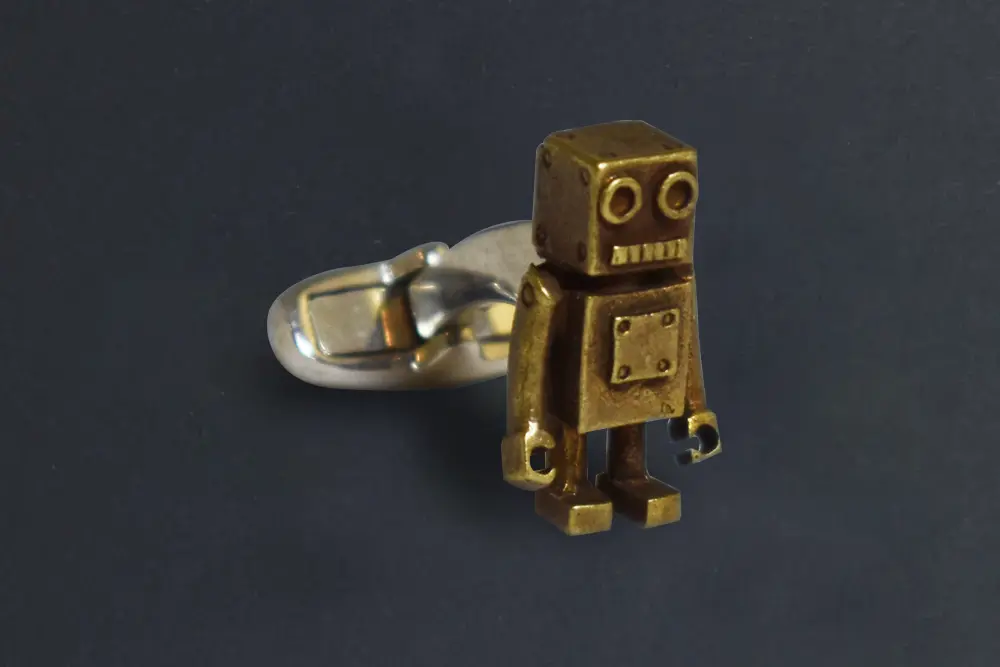
2. Picking sides
A Black and White issue.
One of the challenges was to retain the natural tone of metal. The original link had been designed to use natural brass tones and we wanted to retain this feel, rather than the traditional black and white colours. We understood that the two sides should have the same cast of characters but by reversing the finishes there would be two clear sides. We decided that one side would be gold-plated and the other silver-plated.
Specific areas of the model were then chosen to partial plate to add interest and highlight details. For the Pawn, this was his chest plate and his eyes. To suggest an industrial weathered look we selected an antique finish. On the CAD render, areas on the robot pawn chess piece were digitally painted to emphasise cavities in the model.
Click here to explore other cufflinks
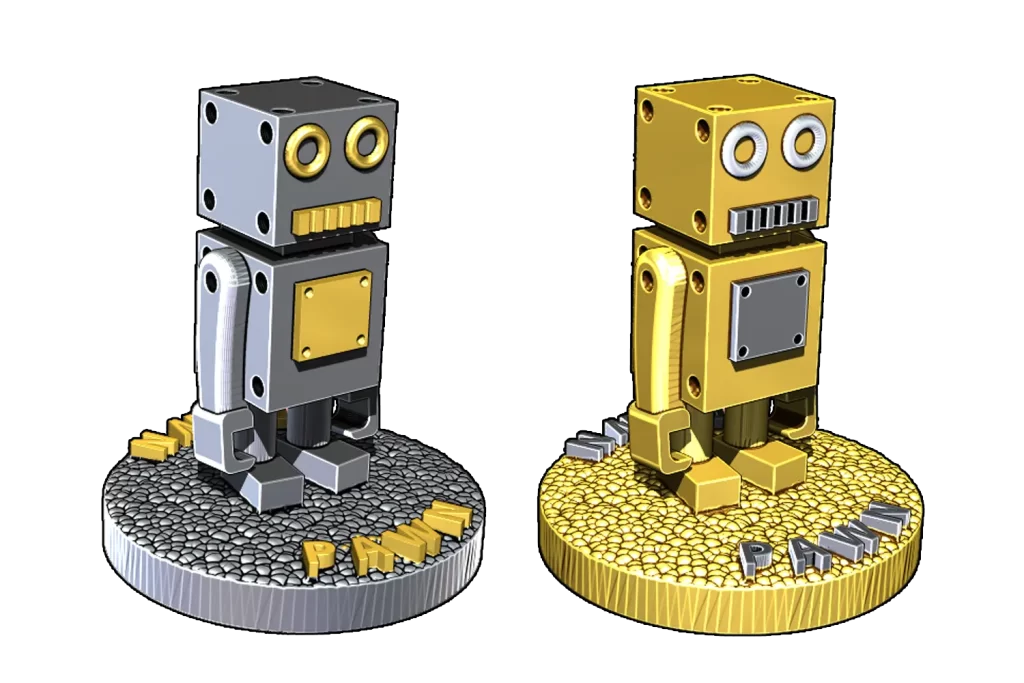
3: Midgame
Designing the major pieces and minor pieces.
The question remained; “how can you modify the basic robot to create the distinctive features of a knight, bishop, or king?”
With the pawn chess piece finalised, we turned towards the design of the other key pieces. To symbolise the importance of each chess piece to the game, it was decided that each robot character should get progressively larger and more imposing from the cute, simple pawn robot right up to a menacing King robot character. However, each character still had to retain a design language to link them all together.
Each piece designed would need differentiation, but it was critical when designing each of them to create a consistent theme and style throughout. It was important to maintain the retro 1950’s style. Each robot character would need to clearly and instantly represent the corresponding chess piece rank, but there should also be design features running through all the characters.
For example, the knight could have a more agile, dynamic posture, while the rook might be bulkier and more fortified.
Rook: The rook (or castle) chess piece is traditionally symbolised by a fortress or tower. Hence the initial thoughts for the rook chess piece turned towards a robust, bulky robot. Whereas the pawn robot is made up of sharp-edged blocks, we wanted to contrast the rook piece by making the design rounded. As the rook can move any number of squares horizontally or vertically, this provided an opportunity to make tracks and movement a key part of the design.
Knight: The knight is traditionally represented by a horse’s head, rather than the knight character himself. The initial thoughts for this design revolved around what would a robot use as transport, therefore we wanted the design of this chess piece to embody this freedom of movement and ability to leap over other pieces to reach its destination. A robotic skull-like chassis was added to strong, bipedal legs to hint at the movement capabilities.
Bishop: Traditionally the bishop piece is crowned with a mitre, so in this case, the bishop’s mitre became part of the robotic head, and the angular body panels were designed to suggest metallic robes, providing ample style cues.
Queen: The queen chess piece is deadly. The design of this piece had to display the menace of these attributes along with the importance of their rank. During the sketch phase, a relentless pose was developed with the queen piece grasping out in front. This helped hint at the ruthless and persistent nature the queen piece has when hunting the opposition.
King: The king is the most important piece in chess, as the aim is to capture your opponent’s king resulting in a checkmate and the end of the game. As previously explained, each piece had been designed to increase in size and menace according to the importance of its rank. Therefore, the King’s design had to be the largest and most physically imposing. After sketching the robot king chess piece, the imposing sense of scale and menace was achieved through the character’s pose.
Click here to see more design concepts
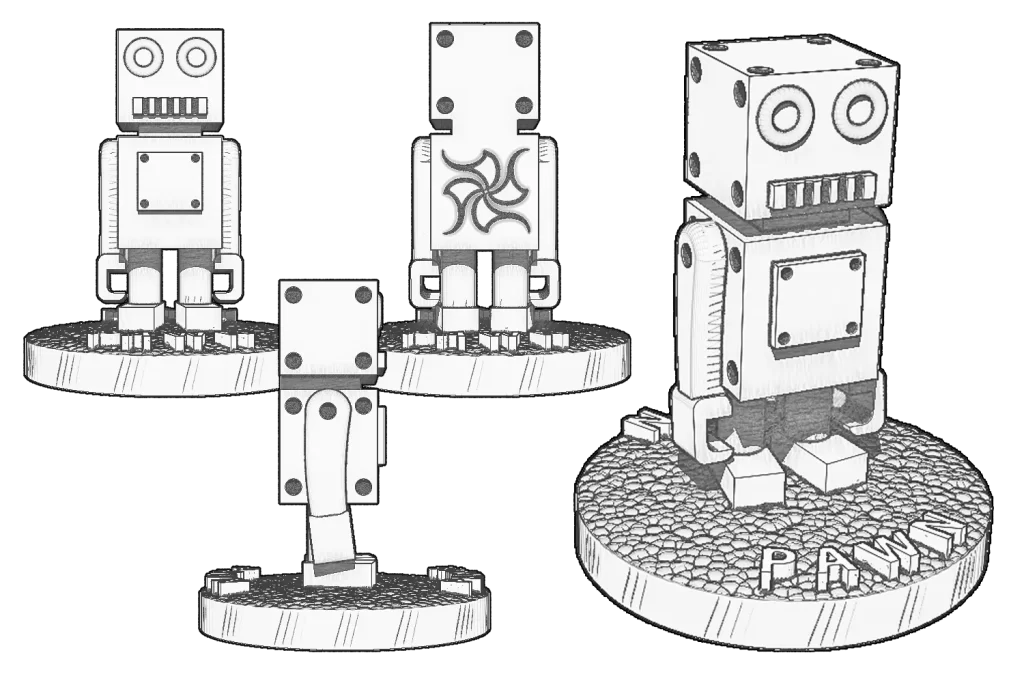
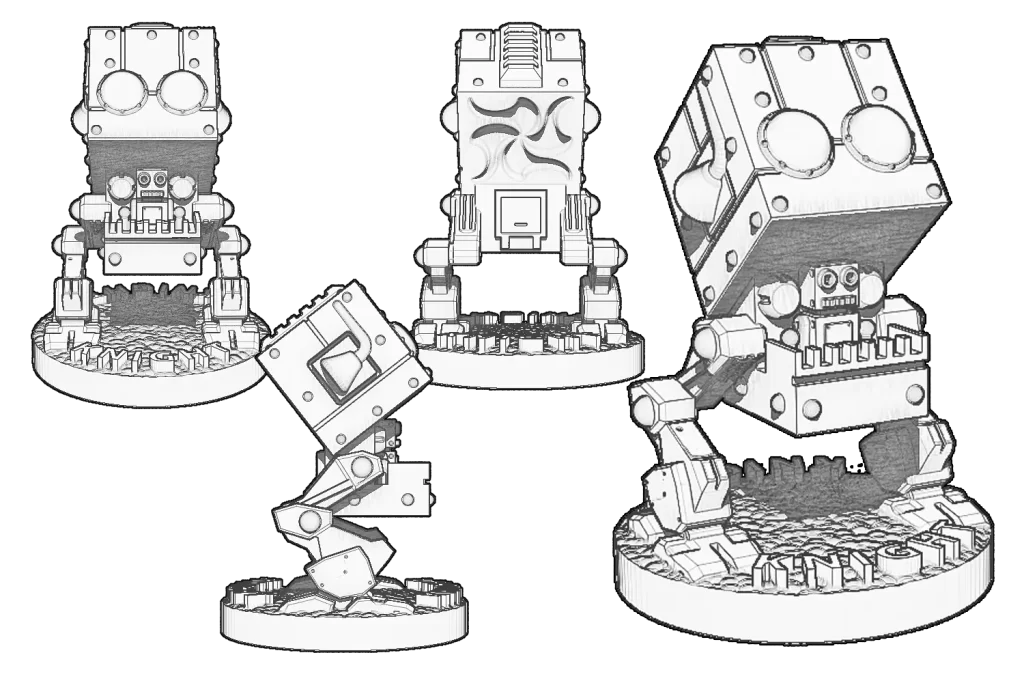
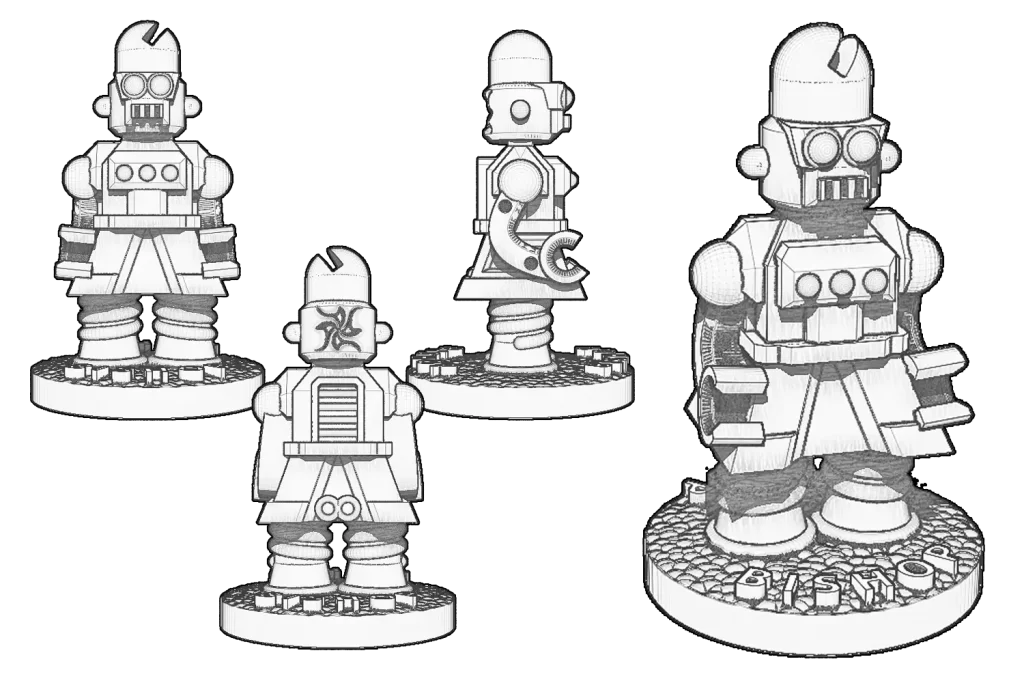

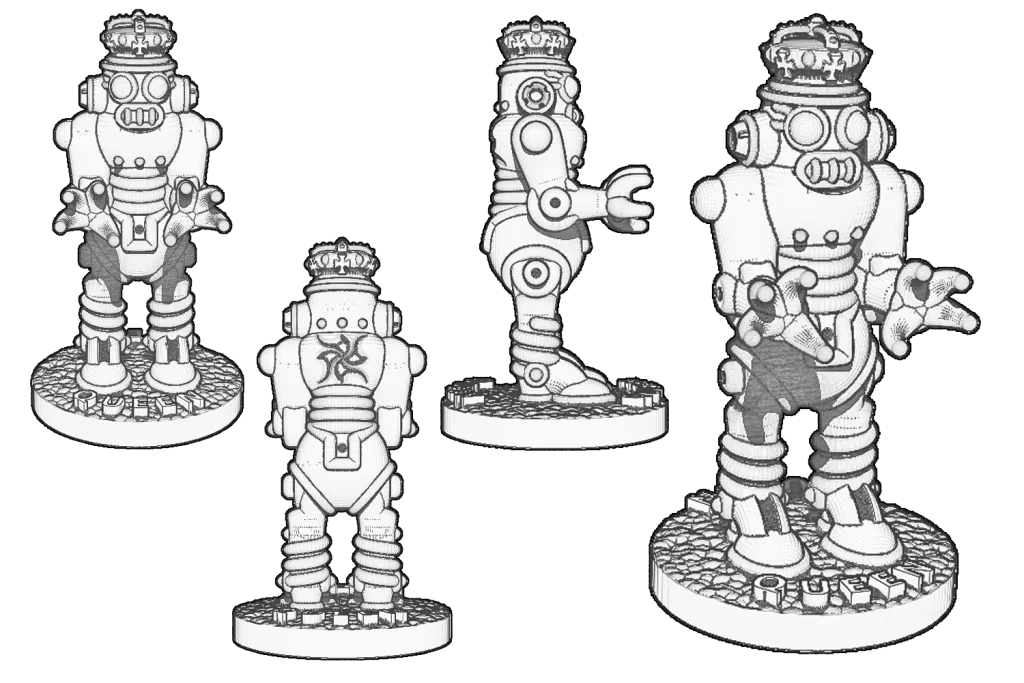
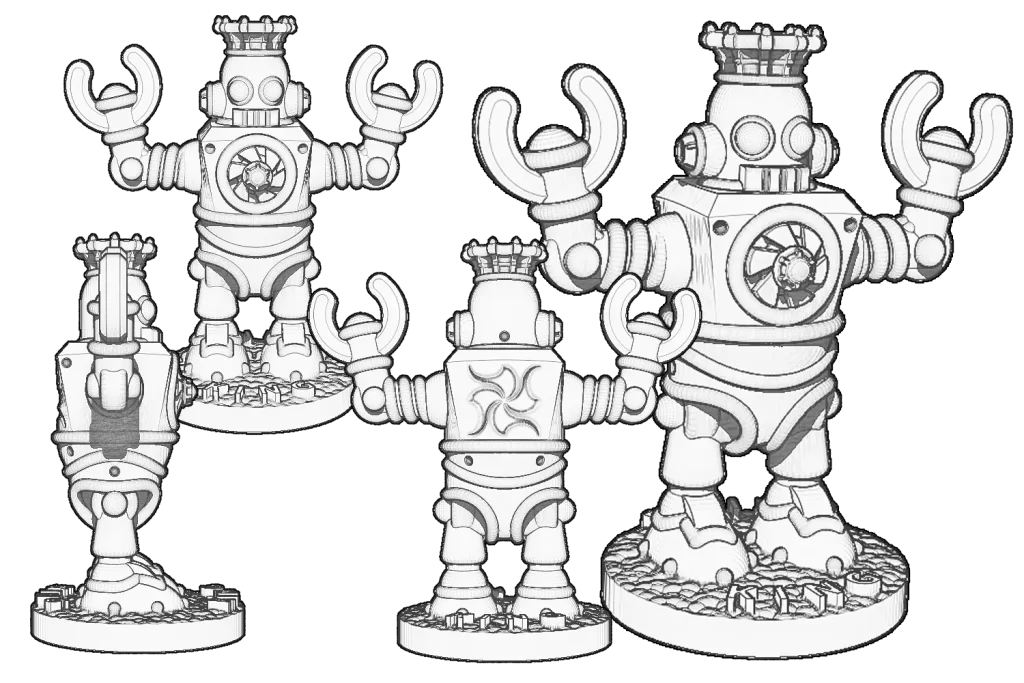
4: Making the first move
From Design models to finished pieces
Using 3D modelling software, we went from sketches to custom models for each different piece. We printed prototypes and tested their balance, suitability, and size. We then adjusted as necessary to perfect each piece before producing a final master pattern.
With master patterns, lost wax casting moulds were created and from these bronze metal castings were produced. These were hand-polished and then finished and plated. Areas of interest were then partially plated by hand using electroplating machines, to bring out the modelling details. We then added the final antique finish to give an industrial-weathered look.
Finally, an adhesive-backed felt material was added to the base to prevent the piece from scuffing the chessboard surface.
The board itself was also made from brass and acid etched and finished in an antique brass style.
Follow this link for more Design content
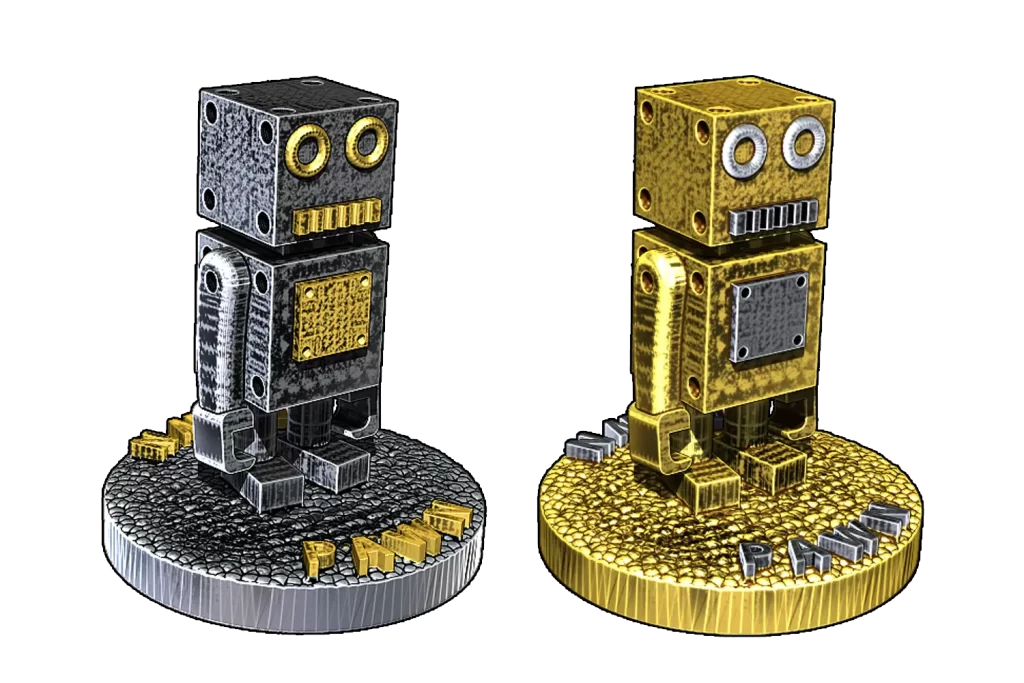
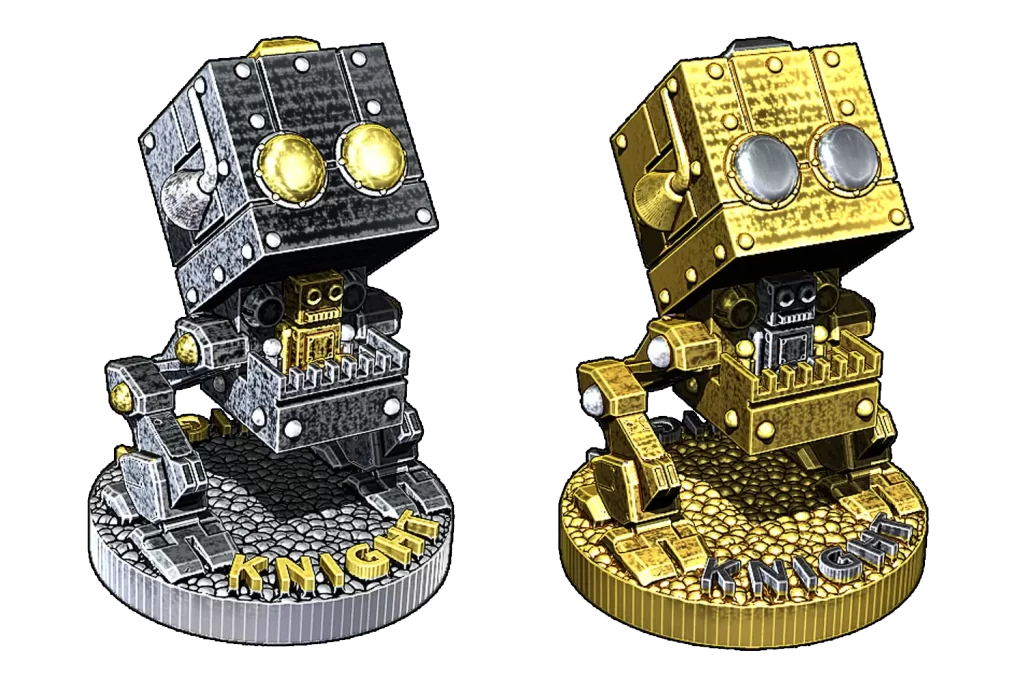
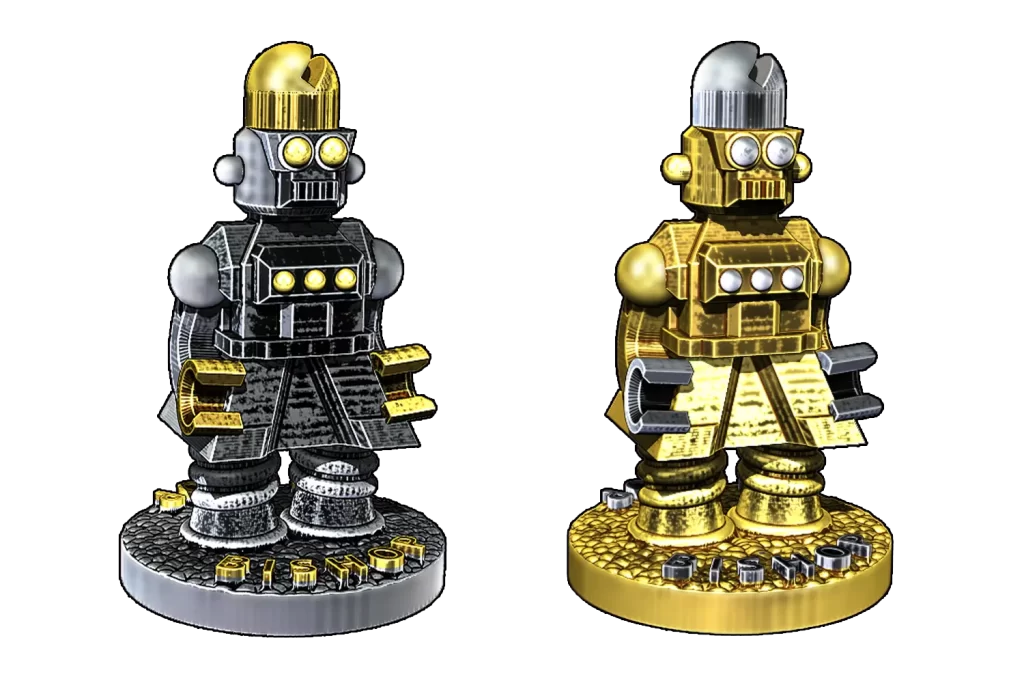
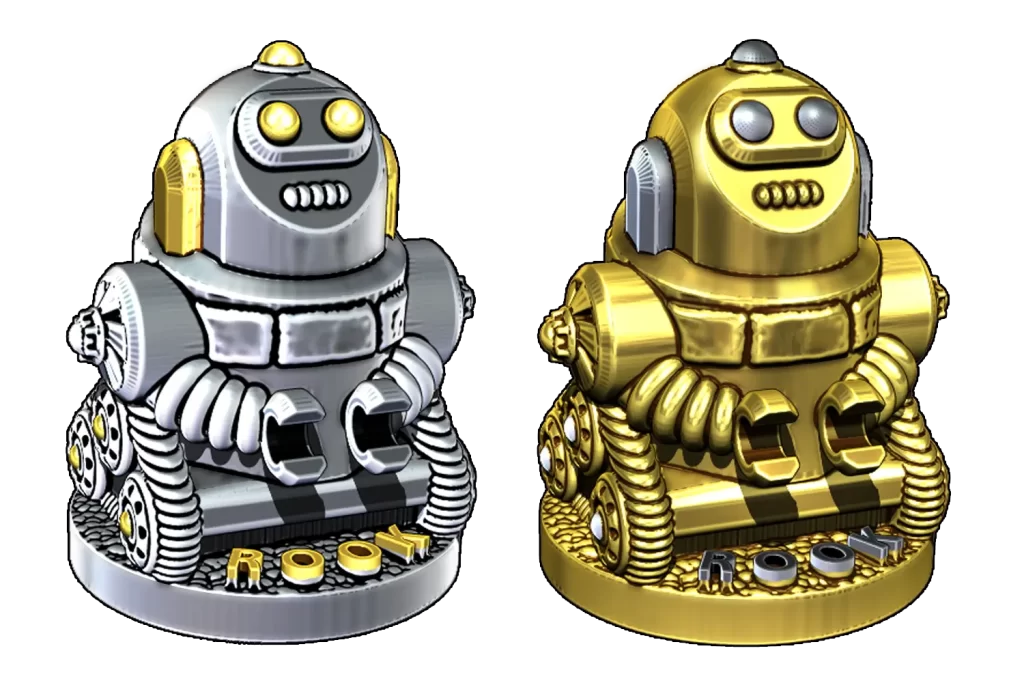
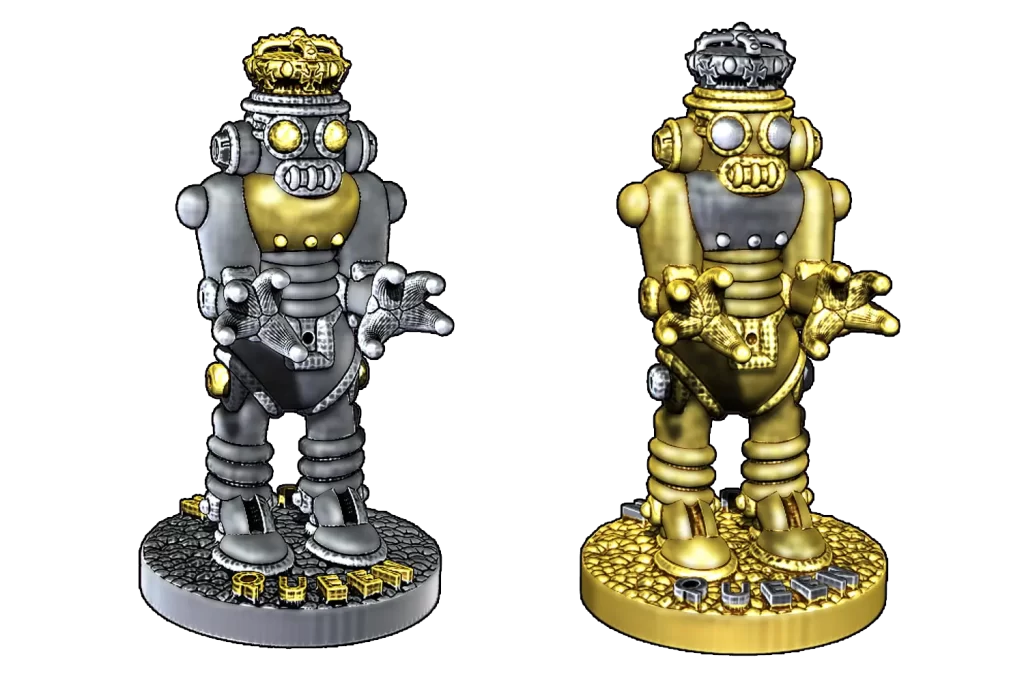
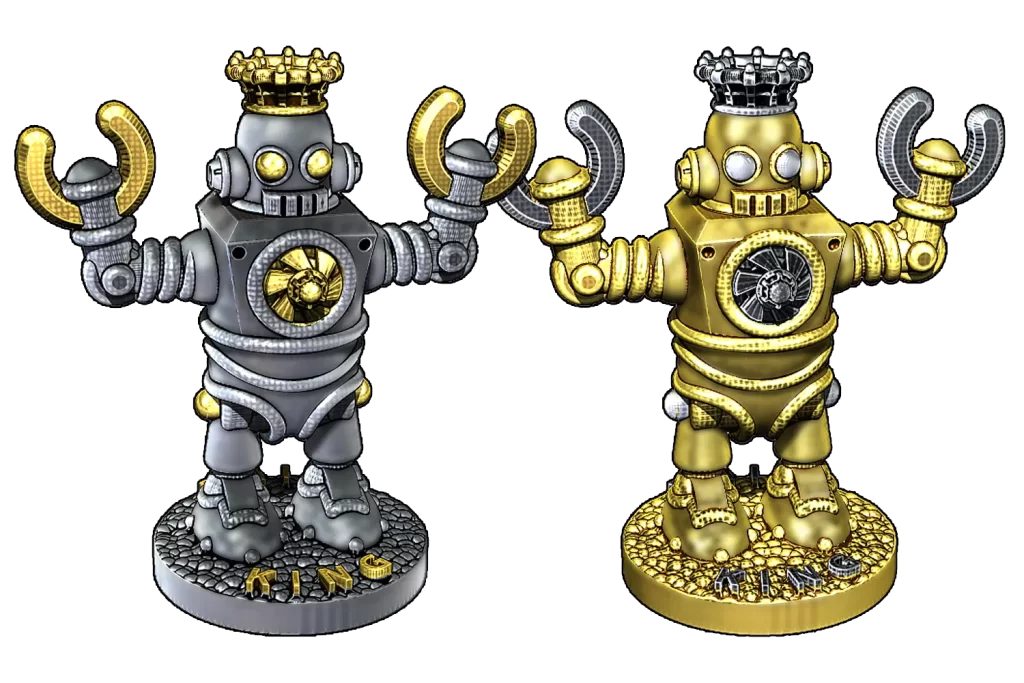
5: Adding the Finishing Touches
Details and Decoration
There are a lot of little tiny creative details to look out for in the Innovative Design of the chess pieces.
The detail in the Rook design is squat and bulky indicating a robust body and this was emphasized with the brickwork pattern on the front and back.
The detail in the Knight was a tiny robot in the style of the pawn chess piece seated in the jaws of the robot skull chassis to suggest that this was the control centre of the vehicle. Little decorations like the entry panel on the back of the design indicate that it is a mode of transport which requires a driver to function.
The Bishop has plenty of little touches like the sophistication of the machinery making up the body. This was increased with vents and exhaust ports on the back, as well as springs on the legs to suggest a suspension system.
The Queen has a crown designed into the robotic head to highlight the important rank of the piece. As with the robot bishop, the sophistication of the machinery was increased with springs for suspension, vents and various rotating joints indicating advanced articulation.
Notably the King piece is standing in a triumphant pose with claws raised aloft in victory. This design is significantly taller and broader than all the other pieces. As with the robot queen, the king’s crown was designed into the robotic head to highlight the important rank of the piece.
A stylized swirl logo symbol was devised and added to each character to create a visual link between pieces, like a manufacturer’s mark. This symbol was positioned on each of the robot chess pieces, somewhere on the model you can find it if you pay close attention. The concept was that this would be complemented in the final point-of-sale packaging.
Each of the pieces was also named on the base. This was to avoid confusion when playing.
Click here to see more case studies

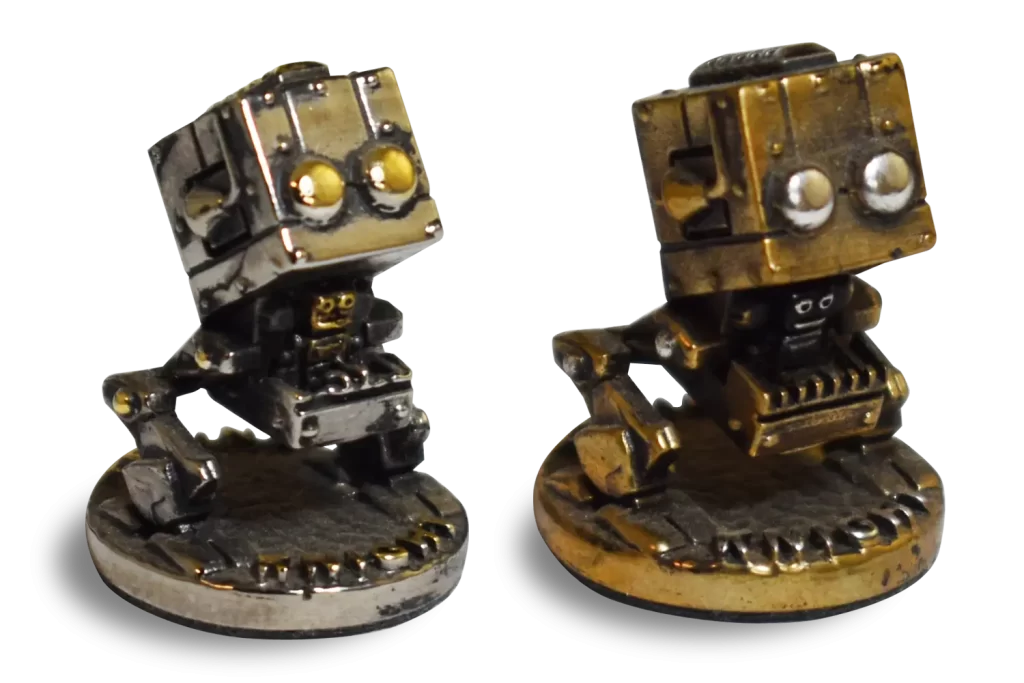
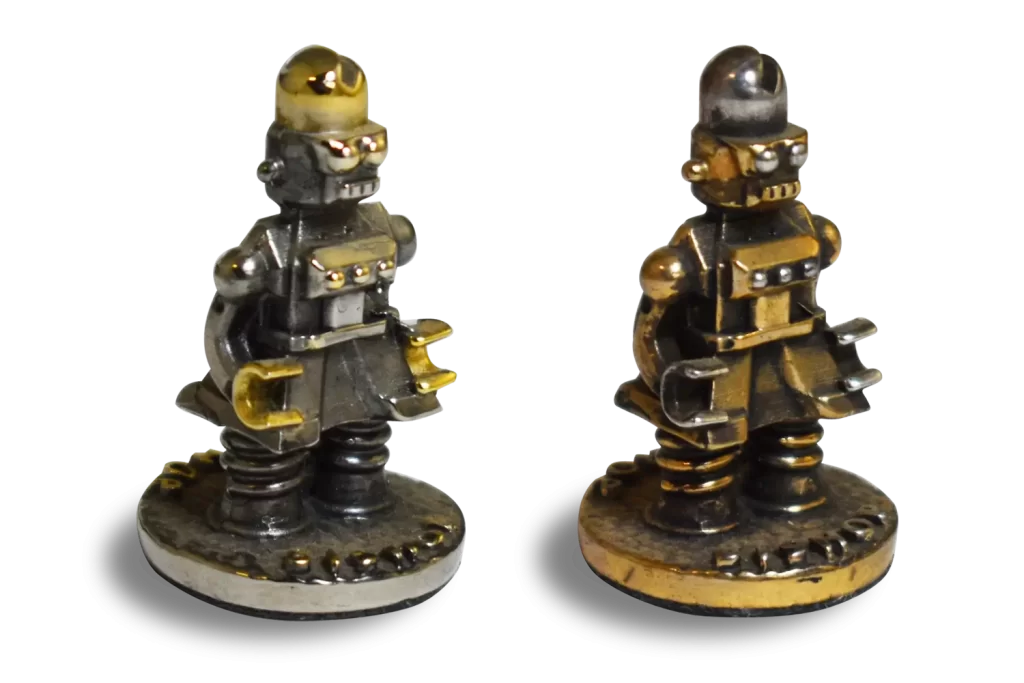
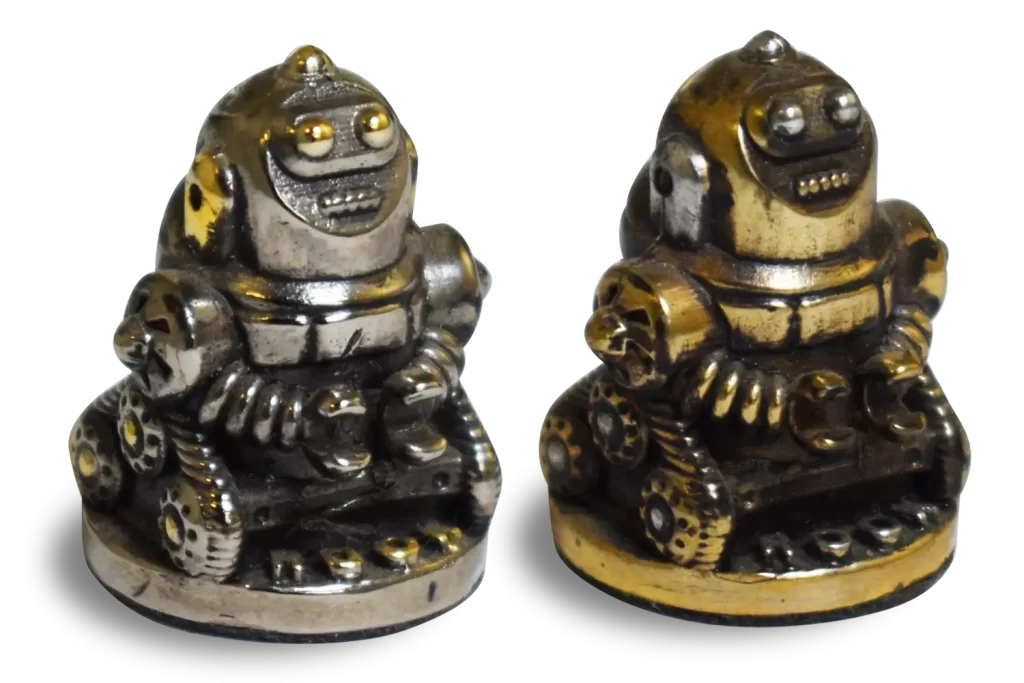

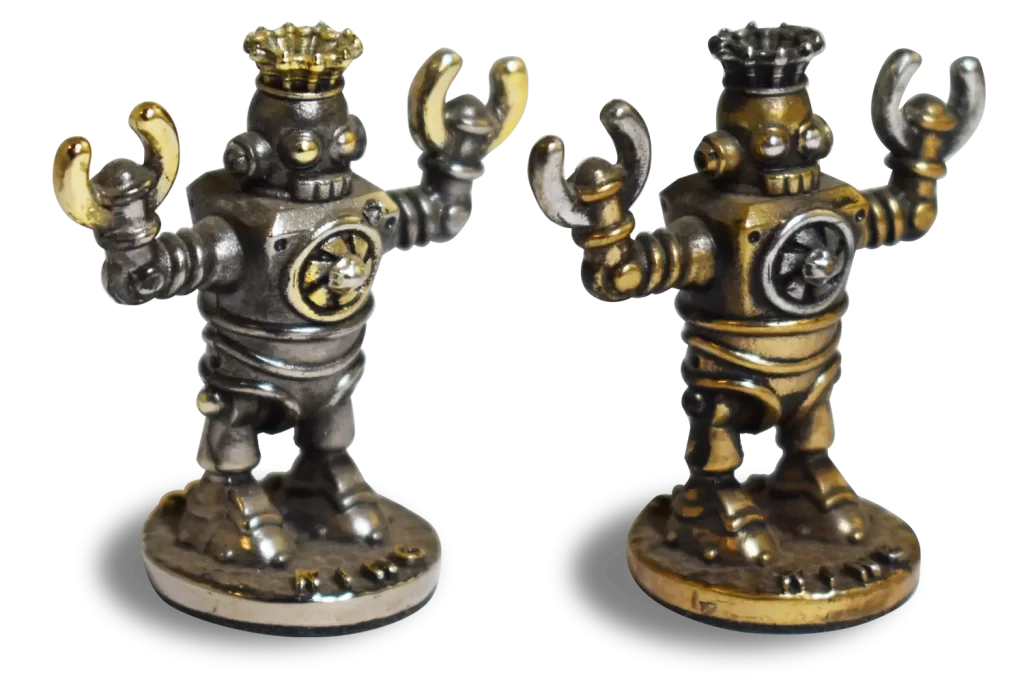
Endgame
We took the concept and ran with it. The brass robot chess set is functional and designed with rewarding intricate details. Everything being made from brass gave the set real weight and a solid feel. The set as a completed piece is captivating and a real stand-out. Checkmate!
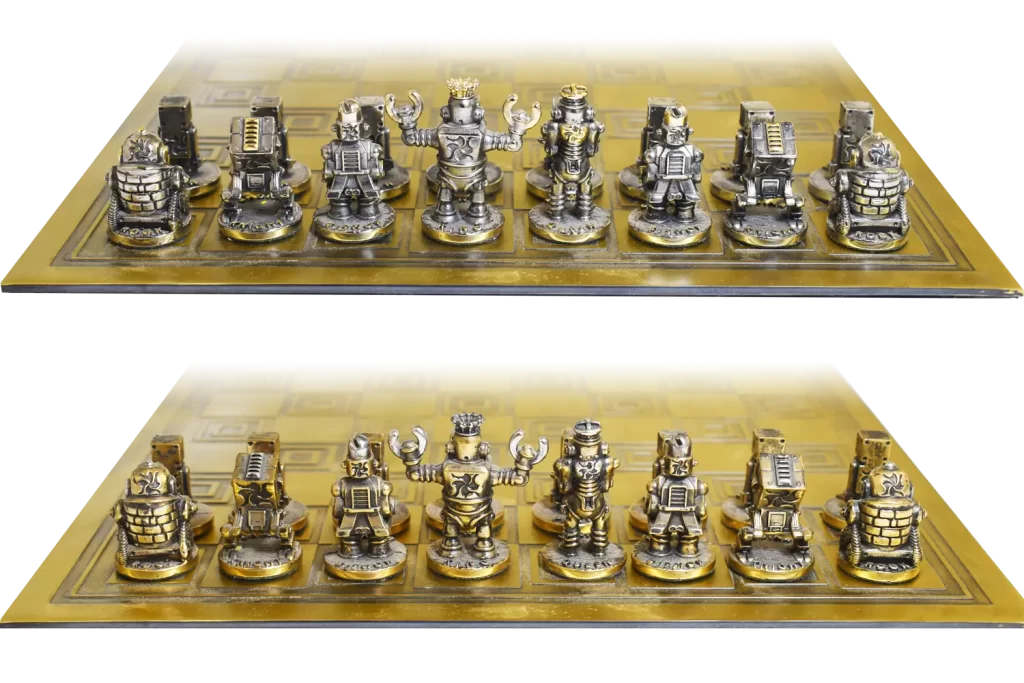
Get in touch to see if we can help with your concept or project. We’d love to hear your ideas.
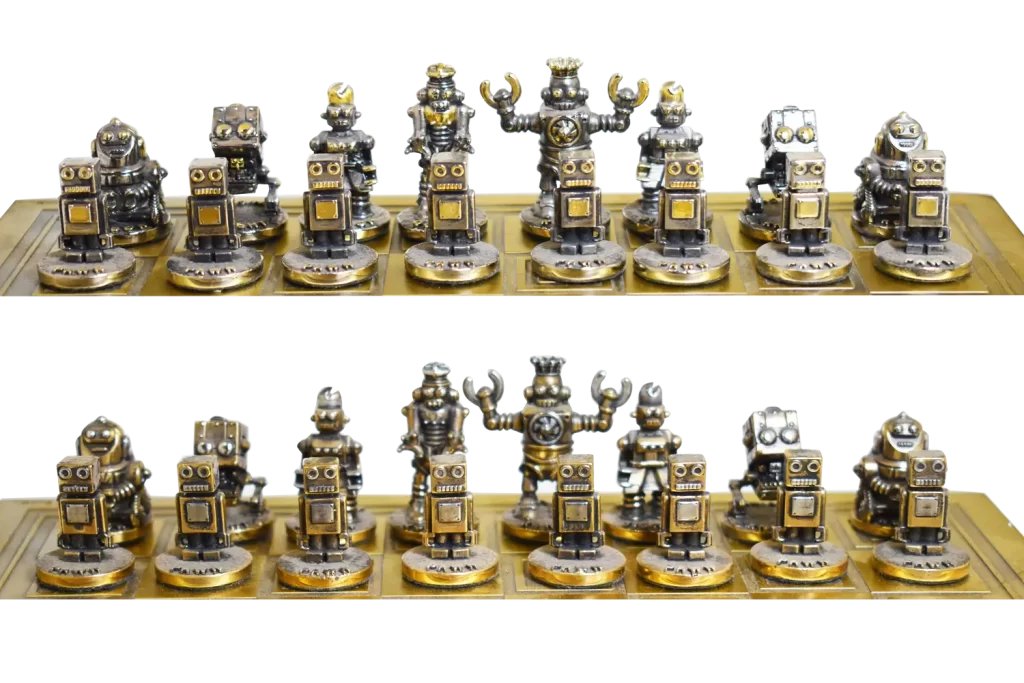
FAQ:
Can I buy one of these ? : No, these were made as a limited edition. Only 10 sets were ever sold.
Can you make more chess sets ? : Yes! The process of design and development of a chess set in metal is within our capacity, however, given the amount of time and effort that goes into a piece like this the costs need to be considered at the outset of the project.
What would you do differently? : The hardest challenge was the King and Queen. I think the Queen needs a redesign in some small details and the King needs to lose some of his width. I also imagine that if we were to make another chess set the bases should be different diameters as the pieces increase in rank.
